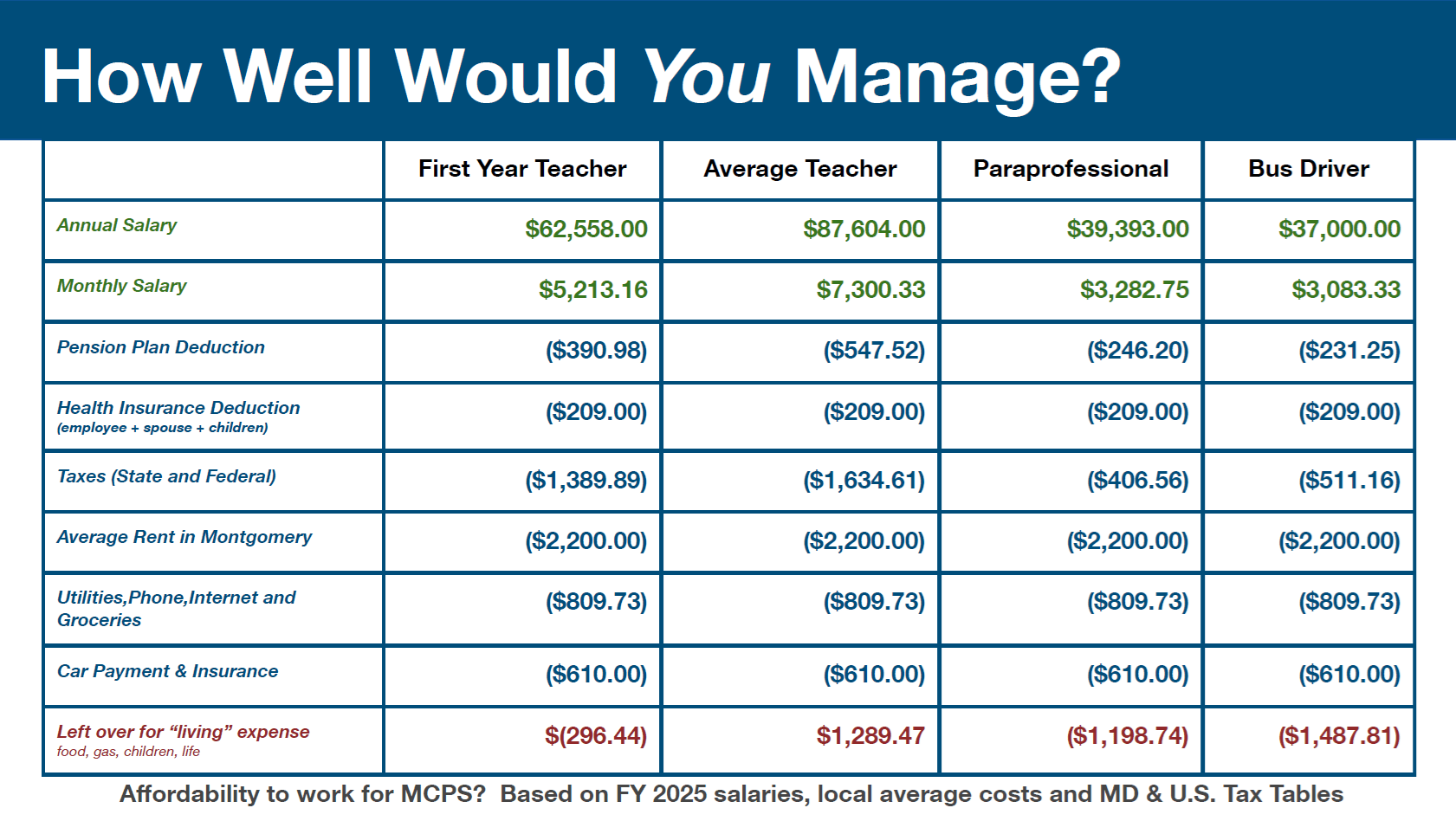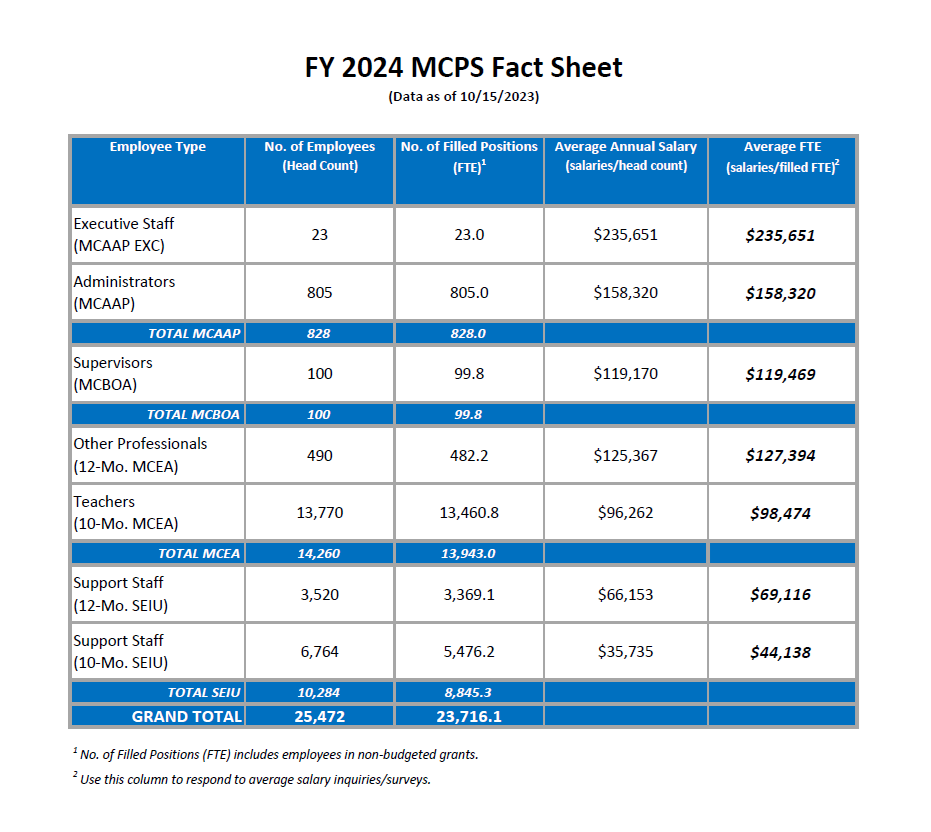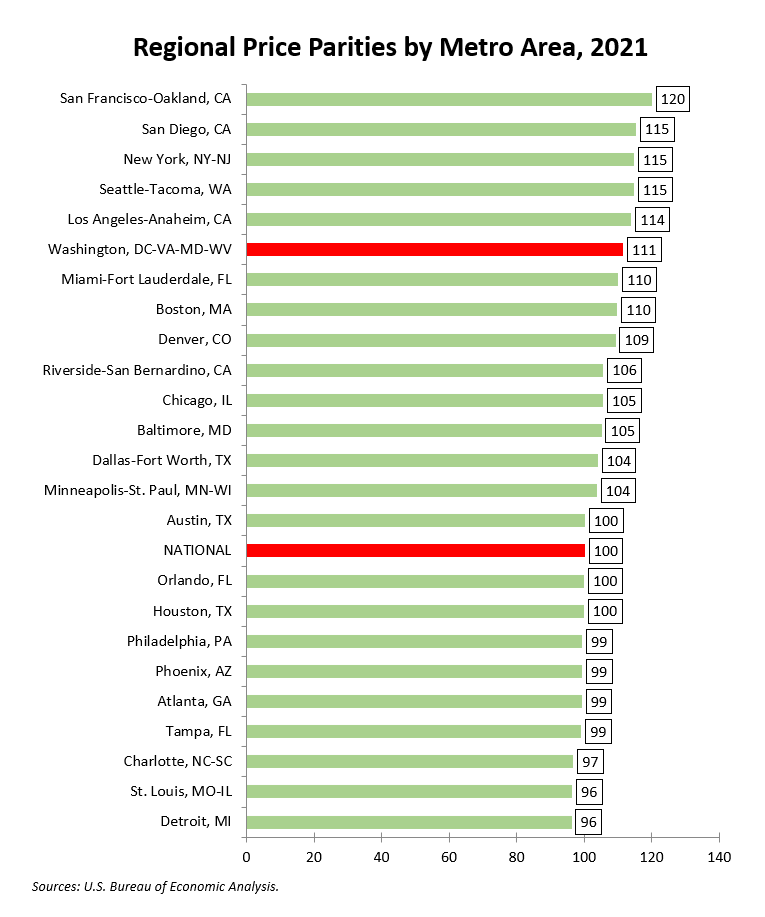By Adam Pagnucco.
Part One outlined the largest increases in Superintendent Thomas Taylor’s recommended FY26 operating budget. Part Two examined fixed charges (employee benefits). Part Three looked at special education. Part Four looked at textbooks and instructional supplies. Part Five discussed maintenance of plant. Now let’s look at compensation.
Compensation is not a separate state category of expenditure. Most of it is contained in categories 3 (instructional salaries) and 12 (fixed charges), though combining them does not give a full picture. Compensation is negotiated between the superintendent and three unions: the Montgomery County Education Association, which represents teachers (roughly 56% of employees), SEIU Local 500, which represents support staff (40%) and the Montgomery County Association of Administrators and Principals (4%). Their negotiated collective bargaining agreements must be approved by union members and the school board. Neither the county executive nor the county council have a formal role in this process.
Taylor’s budget spreadsheet lists $186 million in salary and wage increases, which are mostly placeholders assuming 3.25% wage increases plus a step increase for eligible members (which is customarily 3.5%). These are not out of line with what non-MCPS county employees often receive. His spreadsheet also lists $45 million in benefit increases which we discussed in Part Two. These amounts are partially offset by $65 million in lapse and turnover savings. Overall, compensation accounts for 86% of MCPS’s operating budget, making it the dominant component of the system’s spending.
Taylor devoted part of his budget presentation to compensation, pointing out the cost of living challenges faced by many MCPS employees. (71% of MCPS employees live in Montgomery County.) He used the slide below showing salaries for some employee classifications and their projected costs to argue that some of them were effectively “working poor.” Yes, he used that term.

I respect Taylor for standing up for his people. That’s what all organization leaders should do. It reminds me of his legendary predecessor, Jerry Weast, who fought bloody wars with county leaders to get his employees paid. That said, Taylor’s remarks deserve context.
First, Taylor did not use MCPS’s most recently published average salaries in his slide. He assumes a first-year teacher is paid $62,558, but MCPS’s 2024 Staff Statistical Profile states the average first-year teacher salary as $69,746. He assumes an average teacher is paid $87,604, but the staff statistical profile states the average teacher salary as $98,474. This does not make his point fundamentally wrong, but he is overstating his case.
Second, MCPS has enormous salary inequities. While many SEIU Local 500 members are paid less than $50,000 per year, which does not meet the county’s self-sufficiency standard, the average salary for MCPS executive staff is $235,651. (That’s an average, folks.) Given Taylor’s lambasting of the central office, is that level of pay for top administrators justified? Check out the table from the 2024 Staff Statistical Profile below.

Third, MCPS’s benefits are generous compared to the private sector. The U.S. Bureau of Labor Statistics (BLS) reports that just 15% of private sector workers nationwide had access to a defined benefit pension plan in 2023. MCPS employees get both a core defined benefit pension as well as a supplemental pension, the only school district in Maryland with this arrangement. On health care, MCPS employees pay 12-17% of their premium costs while, according to BLS, private sector workers nationwide pay an average of 21% of their premium costs for themselves and 33% of their premium costs for their families. Self-employed workers, a large and growing share of MoCo’s workforce, have no employer to help them pay for health care or retirement.
One topic on which Taylor is totally right is the cost of living. I discussed this issue in a November 2023 column concluding a series on taxpayer out-migration from Montgomery County. (I need to update that series.) In that column, I printed the following:
*****
Cost of living
The U.S. Bureau of Economic Analysis calculates regional price parities for metro areas, which it defines as “the differences in price levels across states and metropolitan areas for a given year and are expressed as a percentage of the overall national price level.” The chart below shows how the Washington metro area compared to other metro areas on this measure in 2021.

*****
The metro areas shown above are the 25 largest in the U.S., and the Washington area is one of the most expensive in the nation for its residents. That affects MCPS employees just as Taylor says. It also affects the taxpayers who finance MCPS.
And here is the kicker. The county government exacerbates those costs through occasional tax increases, regular fee increases and its substantial imposition of costs on the real estate industry, which drives up the cost of housing. (The largest line item in Taylor’s slide on costs faced by MCPS employees shown above is for housing.) The state government will make this worse if it adopts Governor Wes Moore’s plan to eliminate itemized deductions under the state income tax, which will clobber middle class people with large mortgage interest payments and property taxes – including teachers who own homes in MoCo.
State and county leaders can help both MCPS employees and the taxpayers who pay for them by working to reduce our cost of living, not by making it worse.
Next: the central office.
